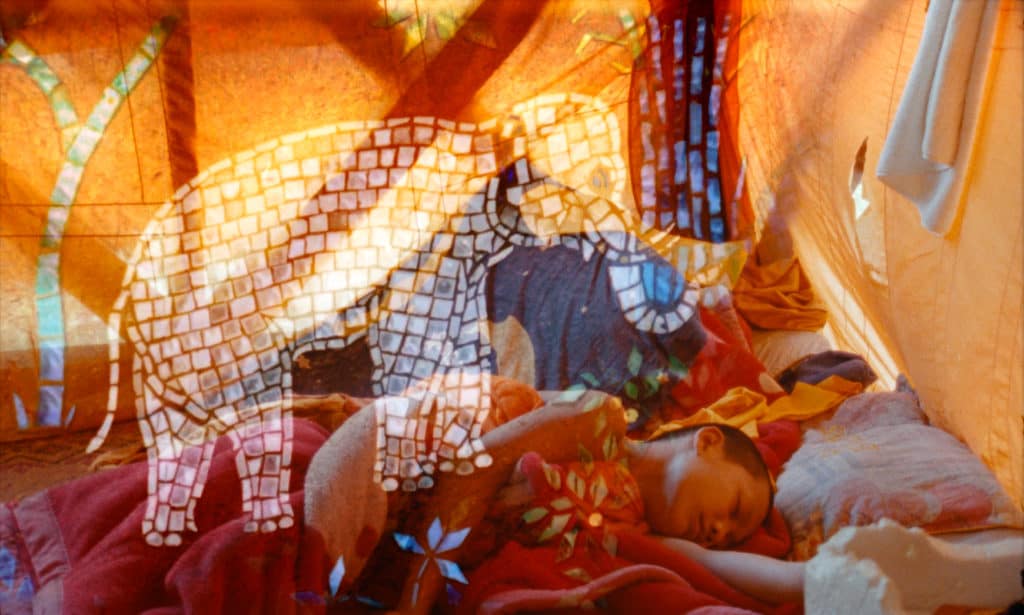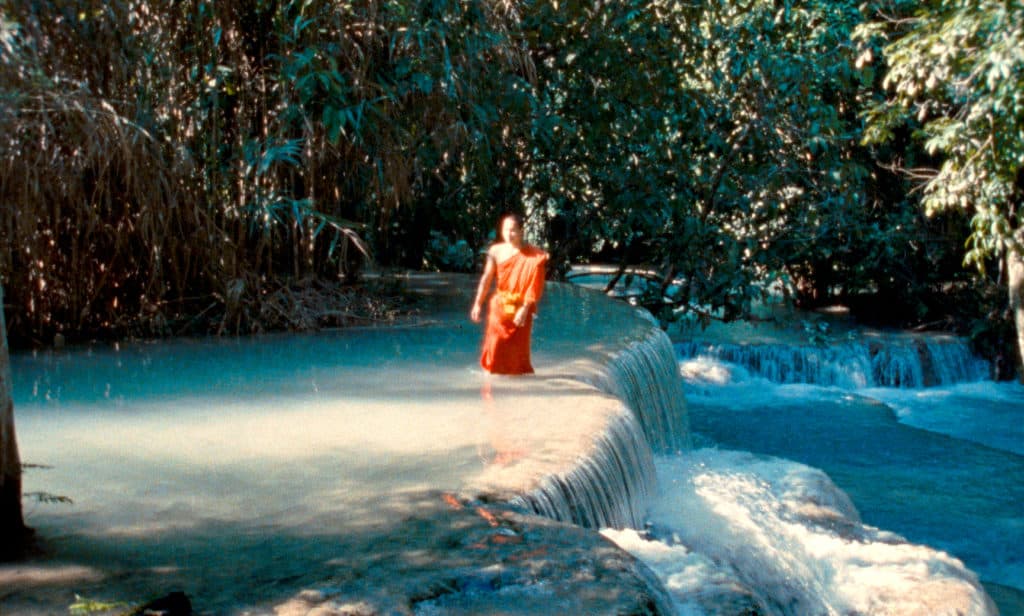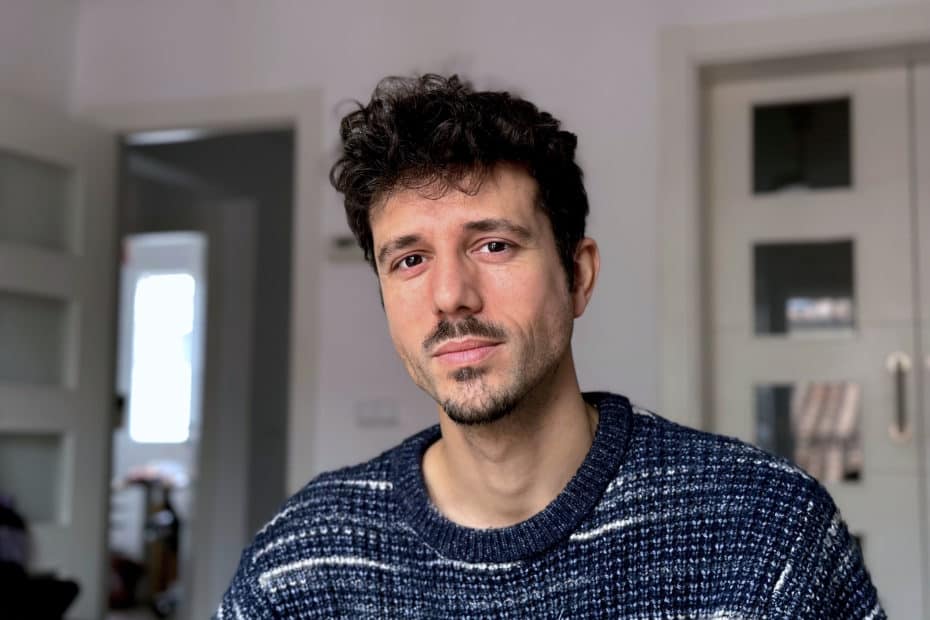In 2020, Lois Patiño’s Red Moon Tide (Lúa vermella) was screened in the Berlinale’s Forum section. Three years later, it was time for Samsara, presented in the Encounters segment, where it won the special jury prize.1The main award went to Here. In many ways, it was one of the strangest experiences of the festival. I had the opportunity to talk with the director about the film. The conversation got off to a rough start.
This feels a bit tricky because this is really a film to experience and not talk about. Anyway, the film is a diptych; it’s in two parts…
Or three parts. (laughing)
Yes, depending on how you regard the middle section. Can you talk about the ideas behind this structure?
The idea of the film was that I wanted to explore the invisible in cinema, and I thought that the idea of watching with your eyes closed could be interesting. I’m always looking for a radical and inventive way to approach the narrative. I wanted an intense experience with light and sound, the intensity of the light changing with flickering but with the eyes closed. One reference was Derek Jarman’s Blue. I wanted to change the room of the cinema to make a collective meditative experience, and I wanted to do it in a narrative film.
Lúa vermella had a radical approach, as well.
Yes, in that film, I explored the experience of time with people paralysed in a landscape. With Samsara, I was thinking about the best way to convey the invisible, and I found the Bardo Thodol, the Tibetanian Book of the Dead. I’m also interested in the spectral aspects, the afterlife, and the limbo, which I think has a natural connection to cinema with the idea of the light and the incorporeal. I think it worked well with the idea of keeping your eyes closed. Then I needed two places. The first one had to be a Buddhist country to introduce the book. So we shot in Laos in a big temple.
Then I wanted a contrast in terms of landscape and religion. The first part is more masculine because of the strict rules in the temple. In the second or third part, in Zanzibar, I wanted to be more feminine, and I found these women working on this seaweed farm. The film is half-documentary, half-fiction, and the goal was to find the country and the community to portray.

Back to a technicality; when I mentioned that the film is in two parts, you corrected me and said three parts. Is that how you see the film? You don’t see the middle passage as a transition of sorts?
I said three parts because it’s 15 minutes long. It’s like something physical; it has a name, Bardo, and that transition can last seven weeks. It can be shorter, as well. This phase is also called the intermediate reality and has its own nature, its own reality, so I think it is a place in itself.
I want to talk about the importance of landscape in your films. It made me think of Béla Tarr, who said that in his mind, the landscape carries more information than a story or a plot. Whether you agree with that or not, how do you approach the landscape?
In all my work, I’ve been reflecting on landscapes conceptually but also on how they are represented in cinema. I want to break the anthropocentrism and rather reflect the view of the landscape. To be more empathetic of the landscape. That is why the people in Red Moon Tide are paralysed so we can focus more on the movement in the landscape. Also, in my previous film Costa da Morte (2013), all the people are working at a distance, so most of the frame is the landscape. On the other hand, the people’s voices are close, so there is a disruption between image and sound.
In Samsara, I think that I’m closer to the people.
Or the spirit of the people?
Yes, but it’s also more emotional with the girl. Or when the older woman is talking about how the chemicals are destroying the seaweed. So, it’s also about man’s impact on nature.

Then you have tourism which can have a devastating effect on nature. Well, even shooting a film can have a negative impact. Did you encounter any negative impact from tourism during the shooting?
In Zanzibar, tourism is evident. It’s also mentioned in the dialogue that the soap they make from the seaweed is sold to tourists and hotels, but there is also an impact on the culture as well.
And from a filmmaker’s perspective, how did you approach your own impact on the places you were shooting in?
We were very aware of not being “exotic” or touristy. When it comes to the crew, there were only four of us coming from Spain. The rest were locals, all in order to minimise our footprint. When it comes to the people in the film, I sometimes let them talk to each other without giving them dialogue, like the monks in one scene in the film, and what they talked about turned out to be very interesting. In general, I tried to be as attentive as possible to people’s reality.
When it comes to references, one director is often mentioned when referred to your work.
Weerasethakul, yes. I was trying not to be too similar to him in the first part, but it was difficult. The architecture was similar, the language as well, and the theme of Buddhism was impossible to avoid.
Did that bother you? Were you trying to distance yourself from his style?
That was one of the reasons we didn’t shoot in Northern Thailand, but then Laos turned out to be very similar. I probably would have changed the location if the entire film would have taken place there, but with the final part in Zanzibar, it didn’t worry me that much.
There were two different cinematographers for the two parts, right?
Yes, first, we shot in Laos with Mauro Herce, who is more atmospheric and classical in his mise-en-scène. In Zanzibar, I wanted to return to a more physical reality, with hands touching things and so on. Jessica Sarah Rinland is very good at capturing that.
That’s all I have. Thank you so much for taking the time, and also, thank you that I didn’t have to close my eyes during the interview. that would have been harder.
